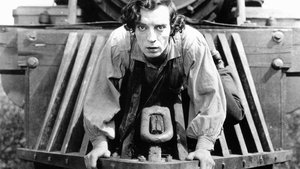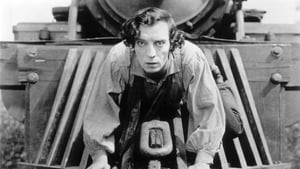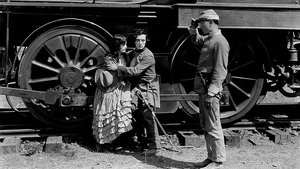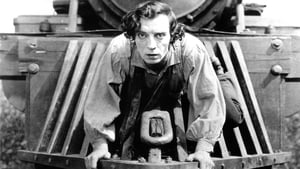Contact: info@alwanfilm.com
Video Sources 0 Views
- Watch trailer
- The General

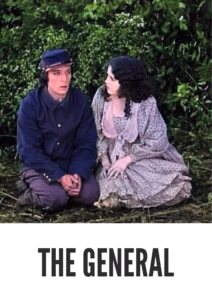
Synopsis
Table of Contents
ToggleReview: The General 1926 Colorized – A Timeless Comedy Classic Revived in Brilliant Color

Introduction
“The General” (1926) is a comedic masterpiece that continues to charm audiences with its timeless humor and thrilling action sequences. In this review, we’ll explore the significance of this early colored film, examining its impact on cinema and its enduring legacy as a classic of the silent era.
Check The Full Colorized Movies List
Check Our Colorized Movies Trailer Channel
Understanding The General 1926 Colorized: Director, Cast, and Genre
Directed by the legendary Buster Keaton and Clyde Bruckman, “The General” (1926) showcases their genius in crafting visually stunning and hilariously entertaining films. Keaton himself stars in the lead role, delivering a masterful performance that cements his status as one of the greatest comedians of all time. Blending elements of comedy, romance, and adventure, “The General” (1926) transports viewers to a world of slapstick antics and heartwarming romance, where laughter knows no bounds.
Exploring the World of The General (1926): Plot and CharactersAt its core, “The General” (1926) tells the story of a Confederate train engineer who embarks on a daring mission to rescue his beloved locomotive and win back the heart of his sweetheart. Along the way, he encounters a series of misadventures and mishaps that test his courage and ingenuity, leading to a climactic showdown that will leave audiences on the edge of their seats. Through its endearing characters and thrilling set pieces, “The General” (1926) offers a glimpse into a bygone era of silent cinema that continues to captivate audiences to this day.
The Art of Film Colorization
Film colorization has revolutionized the way audiences experience classic movies, offering a fresh perspective on beloved films and introducing them to new generations of viewers. By digitally adding color to black and white films, colorization breathes new life into timeless stories, allowing audiences to immerse themselves in the richly detailed worlds of their favorite movies like never before.
Early Colored Films: A Brief History
The history of colored films dates back to the early days of cinema, with filmmakers experimenting with various techniques to add color to their creations. From hand-tinted frames to early Technicolor processes, the evolution of colored film has been marked by innovation and ingenuity, paving the way for the development of modern colorization techniques that continue to captivate audiences to this day.
The General (1926) and Its Early Colored Version
The decision to release “The General” (1926) in a colorized format was met with both excitement and apprehension. While some welcomed the opportunity to experience the film in vibrant color, others expressed concerns about the potential impact on its visual aesthetic. Nevertheless, the early colored version of “The General” (1926) offers viewers a fresh perspective on Keaton’s comedic genius, enhancing the film’s visual appeal and immersing audiences in its richly detailed world.
The Debate Over Film Colorization
The debate over film colorization continues to divide audiences and critics alike, with proponents praising its ability to breathe new life into classic movies and introduce them to new generations of viewers, while detractors argue that it compromises the artistic integrity of the original work and diminishes its historical significance. As the debate rages on, filmmakers and audiences alike are left to ponder the merits and drawbacks of colorization in the ever-evolving landscape of cinema.
Examining The General (1926) as an Early Colored Film
As with any colorized classic, the impact of colorization on “The General” (1926) is a matter of personal interpretation. Some may argue that it enhances the film’s visual appeal and immerses viewers in its world, while others may feel that it detracts from the stark beauty of the original black and white version. Regardless of one’s stance on the issue, there’s no denying the enduring power of “The General” (1926) as a timeless comedy classic that continues to delight audiences of all ages.
Influence and Legacy: The General 1926 Colorized’s Impact on Cinema
“The General” (1926) has left an indelible mark on the world of cinema, inspiring countless filmmakers and captivating audiences with its timeless humor and breathtaking stunts. From its unforgettable performances to its groundbreaking special effects, the film continues to resonate with viewers of all ages, reaffirming its status as a beloved classic of the silent era.
Director’s Cinematic Legacy: Beyond The General 1926 Colorized
Buster Keaton’s influence extends far beyond “The General” (1926), with a diverse body of work that continues to captivate audiences around the globe. From “Steamboat Bill, Jr.” to “Sherlock Jr.,” Keaton’s films are celebrated for their wit, charm, and ingenuity, solidifying his legacy as one of the greatest comedians in cinematic history. Through his groundbreaking work, Keaton has left an indelible imprint on the world of cinema, inspiring generations of filmmakers to follow in his footsteps.
Themes Explored in The General 1926 Colorized
“The General” (1926) explores a myriad of themes, from love and loyalty to bravery and perseverance. Through its endearing characters and hilarious antics, the film invites viewers to ponder the complexities of human nature and the universal truths that bind us together. As audiences immerse themselves in the world of “The General” (1926), they are reminded of the enduring power of laughter to unite us in joy and laughter.
Reception and Controversy Surrounding The General 1926 Colorized
Upon its release, “The General” (1926) received widespread critical acclaim, with many praising its innovative storytelling, breathtaking stunts, and timeless humor. However, the decision to release the film in a colorized format sparked debate among purists, reigniting the age-old discussion surrounding film preservation and artistic integrity. Despite the controversy, “The General” (1926) remains a beloved classic that continues to entertain audiences of all ages, reaffirming its status as a timeless masterpiece of silent cinema.
Where to Watch The General 1926 Colorized Online
For those eager to experience the timeless magic of “The General” (1926), the film is readily available on popular streaming platforms such as Netflix, Amazon Prime, and Hulu. Whether you choose to watch it in its original black and white format or the early colored version, “The General” (1926) promises to transport you to a world of laughter and adventure, where anything is possible and the spirit of comedy reigns supreme.
FAQs About The General 1926 Colorized
Q: Is “The General” (1926) based on a true story? A: No, “The General” (1926) is a fictional tale inspired by the Great Locomotive Chase of 1862, but it takes many liberties with the historical events for comedic effect.
Q: Who are the main actors in “The General” (1926)? A: “The General” (1926) stars Buster Keaton in the lead role, alongside a talented ensemble cast that brings the film’s colorful characters to life.
Q: What awards did “The General” (1926) win? A: While “The General” (1926) did not win any major awards at the time of its release, it has since been recognized as one of the greatest comedies ever made and a masterpiece of silent cinema.
Q: Why was “The General” (1926) released in a colorized format? A: The decision to release “The General” (1926) in color was made to introduce the film to a new generation of viewers and enhance its visual appeal for modern audiences. While the choice to colorize the film sparked debate among purists, it ultimately allowed “The General” (1926) to reach a wider audience and ensure its continued relevance in the annals of cinematic history.
Conclusion
“In Virginia City 1940” transports audiences to a captivating world of lawlessness and adventure, where the spirit of the Wild West comes alive in vivid color. Through its masterful storytelling and unforgettable performances, the film reminds us of the timeless allure of the Western genre and the enduring power of cinema to transport us to another time and place.
As we reflect on the enduring legacy of “In Virginia City 1940,” let us celebrate its status as a timeless classic that continues to captivate audiences with its thrilling action, memorable characters, and breathtaking cinematography. Whether viewed in its original black and white format or the early colored version, “In Virginia City 1940” remains a shining example of the power of cinema to inspire, entertain, and provoke thought.
As we journey through the untamed landscapes of the Wild West and the hearts of its colorful characters, let us remember the enduring lessons of courage, honor, and resilience that “In Virginia City 1940” imparts. In a world filled with uncertainty and upheaval, the film serves as a beacon of hope and a reminder of the indomitable spirit of the human soul.
So, whether you’re a seasoned cinephile or a casual moviegoer, take a moment to revisit “In Virginia City 1940” and experience the magic of the Wild West as never before. For in the timeless tale of love, loyalty, and redemption that unfolds on screen, you’ll find a treasure trove of wisdom and wonder that will stay with you long after the credits roll.

